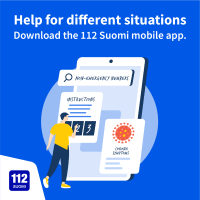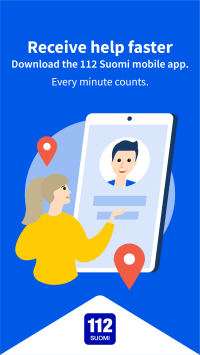Location form in French. The position information of the holiday home must be stored in a visible place, for example inside the door.
DownloadLocation forms - other languages: EN, EE, FRA, GE, RU
-
En cas d’urgence0.06MB pdf
-
Im falle eines dringenden notfalls0.06MB pdf
Location form in Germany. The position information of the holiday home must be stored in a visible place, for example inside the door.
Download -
In case of emergency0.06MB pdf
Location form in English. The position information of the holiday home must be stored in a visible place, for example inside the door.
Download -
Kiireloomulises hädaolukorras0.06MB pdf
Location form in Estonian. The position information of the holiday home must be stored in a visible place, for example inside the door.
Download -
В ЧРЕЗВЫЧАЙНОЙ СИТУАЦИИ0.1MB pdf
Location form in Russian. The position information of the holiday home must be stored in a visible place, for example inside the door.
Download
How to use ERC number - other languages: EE, FR, DE, IT, SO, RU, SE
-
En Finlande, il y a un numéro unique des urgences 1120.12MB pdf
How to use ERC number in Finland - Brochure in French
Download -
Finland hal lambar oo kaliya ayaa laga helaa gurmadka degdegga ah waana 1120.13MB pdf
How to use ERC number in Finland - Brochure in Somali
Download -
In Finlandia c’è solo un numero telefonico di emergenza, il 1120.11MB pdf
How to use ERC number in Finland - Brochure in Italian
Download -
In Finnland gibt es nur eine Notrufnummer - 1120.12MB pdf
How to use ERC number in Finland - Brochure in German
Download -
Lääʹddjânnmest lij tåʹlǩ õhtt jieʹttnââmar - 1120.14MB pdf
How to use ERC number in Finland - Brochure in Skolt Sámi – Hätänumeron käyttö Suomessa koltansaameksi
Download -
Soomes on ainult üks hädaabinumber – 1120.1MB pdf
How to use ERC number in Finland - Brochure in Estonian
Download -
Suomas lea dušše okta heahtenummir - 1120.15MB pdf
How to use ERC number in Finland - Brochure in Northern Sami– Hätänumeron käyttö Suomessa pohjoissaameksi
Download -
Suomâst lii tuše ohtâ etinummeer - 1120.14MB pdf
How to use an ERC number in Finland - Brochure in Inari Sámi Hätänumeronkäyttö Suomessa inarinsaameksi
Download -
В Финляндии имеется только один номер телефонов экстренных служб - 1120.12MB pdf
How to use the ERC number in Finland - Brochure in Russian
Download -
У Фінляндії є лише один номер екстреної допомоги – 1120.14MB pdf
How to use ERC number in Finland - Brochure in Ukrainian.
Download
Posters
-
Emergency number 112 in Finland - poster.pdf0.04MB pdf
There is only one number to call in the event of urgent emergency - 112.



